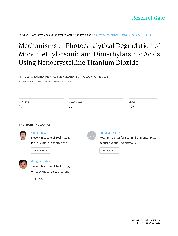摘要
Photodegradation mechanisms of monomethylarsonic acid (MMA) and dimethylarsinic acid (DMA) with nanocrystalline titanium dioxide under UV irradiation were investigated. In the presence of UV irradiation and 0.02 g/L TiO2, 93% MMA (initial concentration is 10 mg-As/L) was transformed into inorganic arsenate, [As(V)], after 72 h of a batch reaction The. mineralization of DMA to As(V) occurred in two steps with MMA as an intermediate product. The photodegradation rate of MMA and DMA could be described using first-order kinetics, where the apparent rate constant is 0.033/h and 0.013/h for MMA and DMA, respectively. Radical scavengers, including superoxide dimutase (SOD), sodium bicarbonate, tert-butanol, and sodium azide, were used to study the photodegradation mechanisms of MMA and DMA. The results showed that hydroxyl radicals (HO center dot) was the primary reactive oxygen species for the photodegradation of MMA and DMA. The methyl groups in MMA and DMA were transformed into organic carbon including, formic acid and possibly methanol also through photochemical, reactions. The results showed that nanocrystalline TiO2 can be used for the photocatalytical degradation of MMA and DMA and subsequent removal of the converted As(V), since the high adsorption capacity of the material for inorganic arsenic species has been demonstrated in previous studies.
- 出版日期2008-4-1
- 单位中国环境科学研究院
